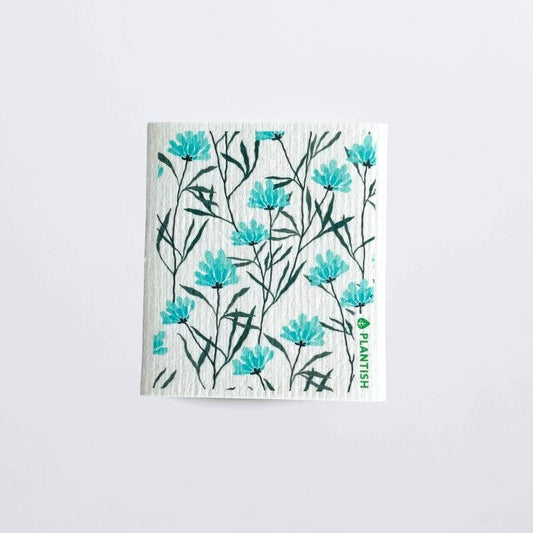Swedish dishcloths are a popular alternative to traditional sponges and paper towels. They are made of a combination of cellulose fibers and cotton, making them both durable and environmentally friendly. They were invented by a Swedish engineer in 1949 and have been a staple in Swedish households for generations, are now taking the world by storm.
Swedish dishcloth vs Traditional dishcloth
Compared to traditional dishcloths, Swedish dishcloths are more absorbent and easier to clean.
Traditional dishcloths are generally made from microfiber or cotton. These are good for cleaning, but they are not very good at releasing liquid and dirt. Your cloth ended up being heavy and damp, and that's how odours have the chance to develop and grow.
Swedish dishcloths are made from wood cellulose and cotton fibers, so they function like a sponge and cloth. These cellulose sponge cloths absorb and quickly release liquid, thus allowing them to dry very quickly. Consequently, odours do not have a chance to develop, so they don't smell.
When compared to paper towels, Swedish dishcloths are much more environmentally friendly as they can be reused over and over again, whereas paper towels are single-use, non recyclable and almost always end up in landfills.
Five ways to use Swedish dishcloth

Here are five different ways to use Swedish dishcloths in your home:
- Cleaning dishes: Swedish dishcloths are great for cleaning dishes because they are absorbent and tough on grease and grime. Simply wet the cloth, add soap, and use it to scrub your dishes. They are much more effective than sponges and won’t leave behind any lint or fibers.
- Wiping counters: Swedish dishcloths are also great for wiping down counters and surfaces. They are absorbent and can handle spills and messes without leaving behind any streaks. They are also machine washable, so you can use them again and again.
- Cleaning appliances: You can use Swedish dishcloths to clean your appliances, such as the refrigerator, stove, and oven. Simply wet the cloth, add a small amount of cleaning solution, and use it to clean the surface. The cloth will help you get into tight spaces and remove dirt and grime.
- Cleaning up spills: Their highly absorbent material makes them perfect for quickly soaking up liquids, even large spills. If you spill red wine on your carpet or hardwood floor, a Swedish dishcloth will easily soak up the liquid, preventing it from spreading and staining. These cloths are also great for wiping up water from a broken glass or a spill from a pot on the stove. The absorbent fibers can trap the liquid and prevent it from spreading, making clean-up a breeze.
- Cleaning windows: Swedish dishcloths are great for cleaning windows and mirrors. They are lint-free, so they won’t leave any streaks or fibers behind. Wet the cloth and use it to clean the surface, then dry it with a clean, dry cloth.
Caring for Your Swedish Dishcloths

So how do you care for your Swedish dishcloths? It's simple!
- Machine wash with warm water and hang or lay flat to air dry. Avoid using fabric softeners or bleach.
- Boil the cloth for a few minutes to disinfect it.
- Place it in the dishwasher top rack.
- Microwave it for 1 minute while the cloth is damp to sanitise it.

Our Swedish dishcloths are extremely durable, you can safely put your Swedish dishcloths in the washing machine or dishwasher more than 200 times.
Video Guide
Watch our video guide on how to use and clean your Swedish dishcloth
End of life disposal
With proper care, your Swedish dishcloths can last for 1 year or even years. However, eventually, they will reach the end of their lifespan. Each Swedish dishcloth is made of 70% wood cellulose and 30% cotton, therefore they are 100% compostable.
In summary, Swedish dishcloths are a great addition to your household cleaning supplies. They are eco-friendly, versatile, and can be used in many different ways. They are also machine washable, so you can use them again and again, reducing waste in the kitchen. Give them a try and see how they can simplify your cleaning routine.
















